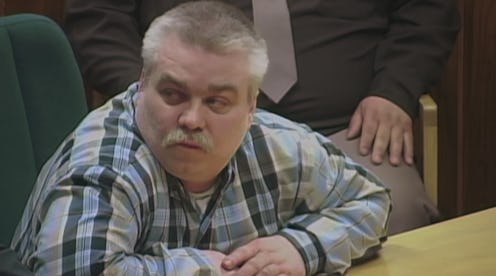News
New Info On Steven Avery?

On Saturday night, Investigation Discovery aired Steven Avery: Innocent or Guilty. Examining the facts behind the hit Netflix documentary series Making a Murderer, the show promised to deliver new details about the murder of Teresa Halbach, and that's naturally made people hopeful that some major news in the case would be broken. So, what was it all about? Here are 3 new pieces of evidence raised by Investigation Discovery.
If you watched Making a Murderer, some of the names and faces that were featured in the show were surely familiar: Steven Avery, Brendan Dassey, Ken Kratz, Jerry Buting, and many more. Even prior to the show's airing, some details about what it contained had come out, such as former Calumet County DA Ken Kratz alleging that Avery had been "targeting" Halbach, and that his past behavior had made her uncomfortable well before her disappearance.
But that's not the only new issue or angle Steven Avery: Innocent or Guilty raised, nor did they go without some rebuttals. Here are three new things this show will have you thinking and talking about, even though the fundamental facts of the case remain largely unchanged ― as frustrating as it may be, it's possible that so many of these questions will never be truly answered.
1. The Animal Cruelty
If you've watched Making a Murderer, this incident actually is mentioned early on, but it's not described in nearly such gruesome detail as it was by Investigation Discovery. Back in 1982, Avery violated his probation from a previous burglary conviction when he committed a grisly act of animal abuse ― as the AP detailed back in 2005, he poured gasoline on a cat and threw it into a fire.
While this is by no means proof that he killed Halbach, animal cruelty is often considered a warning sign for future violent behavior. And it does reinforce the idea that Making a Murderer presented Avery's early life transgressions in a much rosier light than it could have.
2. The Blood In The Car
Here's a question for you: if Steven Avery killed Teresa Halbach in his garage, as the prosecution argued, then why was her blood discovered in six different places inside her RAV4? Kratz argues that it was because Avery (along with his nephew Brendan Dassey) briefly transported Halbach's corpse in the car before taking it to the nearby burn pit.
His only source for this claim, however, is Dassey's excruciating four-hour confession, which has been widely criticized as coercive, and which Dassey still insists was false. It's safe to say that for anybody who's followed this case closely, claiming any kind of factual certainty based on Dassey's confession alone will set off some alarms.
3. The Blood Vial
One of the single most memorable moments of Making a Murderer comes when Avery's defense attorney Jerry Buting uncovers what looks to be a striking example of evidence tampering. Suspicious that the smudges of Avery's blood that was discovered in Halbach's car could've been planted, Buting examined a vial of Avery's blood that the county had in evidence dating back to his wrongful imprisonment, and found a tiny hole in the vial's stopper. Incriminating, no?
Well, Kratz and the prosecution had an answer to this: that the hole was how the blood was inserted into the vial, and that such holes were the norm. In fact, court documents from the time show that a nurse nearly testified in the trial to establish that the puncture hole was not, in fact, unique or remarkable.
While it's pretty undeniable that the documentary presents the presence of that hole as a smoking gun, Buting still had a capable response to this ― the evidence tape on the container with the vial inside had also been cut, and even if the hole is entirely unremarkable, there was blood visibly forced up alongside the stopper, as though it had been removed or replaced after the fact. Buting said that the bloodied stopper (along with the cut evidence tape) were all things about the vial that caught his eye, and supported his notion that Avery's blood had been tampered with.
Images: Making a Murderer/Netflix; Steven Avery: Innocent or Guilty (3)